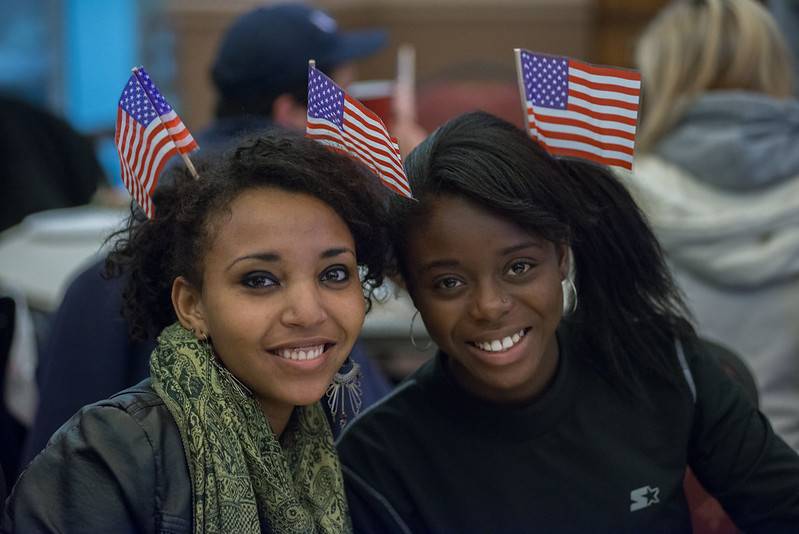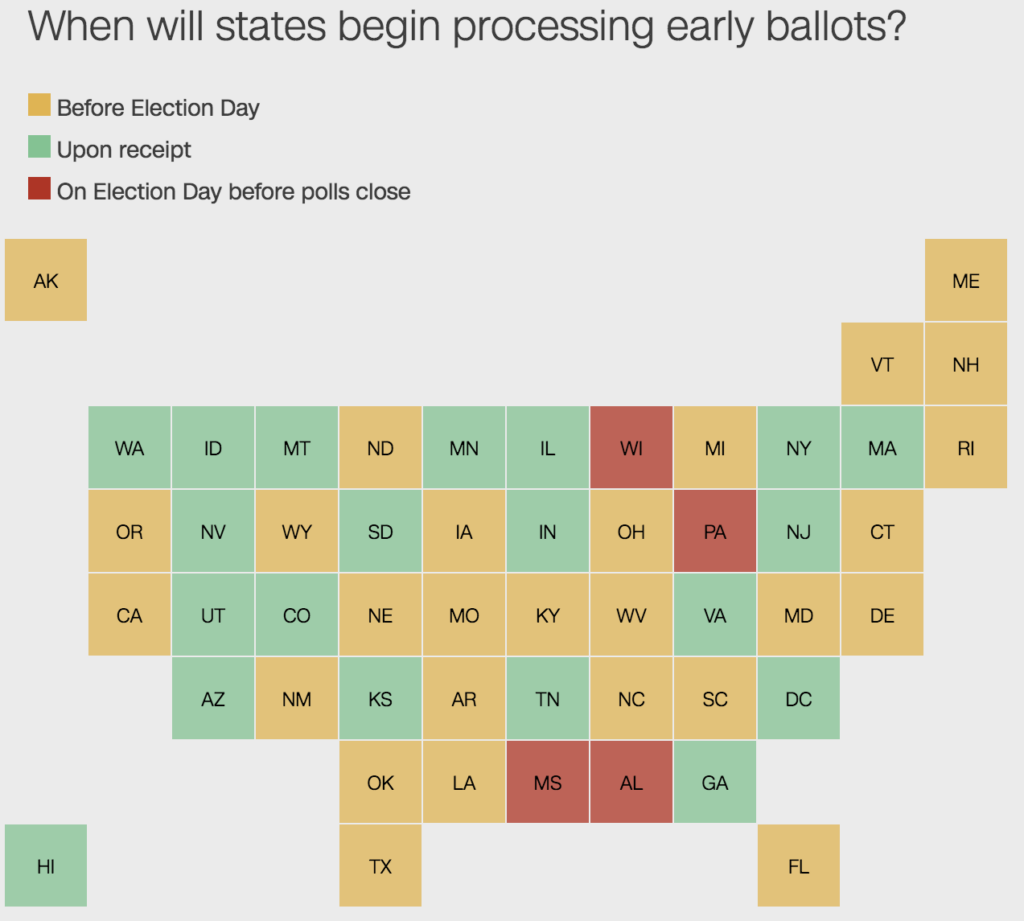The results of the presidential election and the dozens of down-ballot races may take up to four weeks. And that’s okay.
This post originally appeared on the League of Women Voters blog. It has been republished with permission.
There are a lot of predictions about how the 2020 election will play out this November, but one thing is almost certain: We are not going to have results on election night.
And that’s okay.
With the increase in mail-in ballots in every state this year due to COVID-19 risks, immediate results are not possible on November 3. This means we are going to go to bed on election night, not knowing the results of the presidential election or the dozens of down-ballot races in every state. It may take a week, or even four weeks for final election results in multiple races―especially when we consider possible court challenges.
And we will be fine. This year, we are going to have to wait for democracy to run its course. We need to allow time for every vote to be counted accurately and completely. We need to allow time to exercise a core tenant of our democracy: every vote―and the voice it represents―counts.

We also need to demand that candidates and the media wait as well. We are all familiar with the ‘too close to call’ races. Candidates should not be declaring victory with only the fraction of results or only in-person votes tallied. We the voters have the power to choose our elected representatives. We must demand that the politicians and the parties wait for the official result.
As American voters, we have become accustomed to learning our election outcomes on the same day we cast our ballot, or in some cases, even before the polls close and every vote has been counted.
Not in this election. Quarantines and social distancing are spurring more demand for absentee and mail-in ballots across the country. This is a good thing. It signals that voters are not discouraged by an inability to be seen on Election Day but are seeking to be heard, and they are using another democratic, tested tool to do so: the U.S. Postal Service.
The U.S. Postal Service continuously plays a critical role in the electoral process every election cycle. Thousands of postal workers and mail carriers sort and safely deliver ballots to polling locations. In every election, they help make our democracy work.
We trust them to do the job.
Neither snow nor rain nor heat nor gloom of night has kept one of the nation’s oldest institutions from supporting our election process. For many, the postal service represents the only option to cast their ballots. Overseas servicemembers, Americans in rural communities, and people with disabilities have relied on the US Postal Service to cast their ballots in elections for more than two centuries.
Despite recent structural and policy changes, the postal service has the experience and skill for this moment.
This year many states have eased their restrictions on mail-in voting, not requiring an excuse to vote absentee, and some states have even gone as far as to join the ranks of Washington, Oregon, Hawaii, and Colorado and provide all registered voters with a ballot in the mail.
But mail-in ballots require additional time for election officials to count and process, which flies in the face of the instant results we have come to expect on election night. And we need to remember, not every state count ballots at the same time.
More than 20 states count mail-in ballots that arrive after November 3, as long as they are postmarked on or before Election Day. In Michigan, Wisconsin, and Pennsylvania, counting mail-in ballots cannot legally begin until polls close on Election Day, despite how many people mail-in their ballot early. And in even more states, voters can return their ballots on Election Day―either by mail, ballot drop box, or in-person at a polling location. Due to the surge in absentee, early, and mail-in voting, it is likely that results in those states will take a while to certify.

Here is where delayed results will happen, but it’s a good thing.
Let’s think this through. We want complete and accurate local and state election results. So, if we are waiting while ballots are counted―instead of rushing―we won’t learn the election outcomes on November 3, but it means our system is working. It means that everyone’s vote will be counted, and their voice heard.
Consider that national, local and state-wide elections could be close. Allowing the amount of time needed to guard against voting discrepancies and fraud should be our priority. Slowing down the process will strengthen the integrity of our election results and the accuracy of our democratic system.
The COVID-19 pandemic has affected nearly every facet of our lives, increasing anxiety and confusion for American voters who are already dealing with a lot of change and uncertainty. People should not have to choose between their health and their vote.
During these times, by submitting mail-in ballots―early, if you can―voters are being active stewards of the health of our communities as well as protecting our democracy. Let states take time to count every vote. We will know soon enough the winners of each race; and if we take our time, we know the results will be accurate.
We are facing new challenges to our election system, but our democracy already has the solutions needed to persevere and succeed. If we take our time, we can still ensure election rights, access, and accuracy for all voters.
After all, our democracy is worth the wait.
You may also like:





